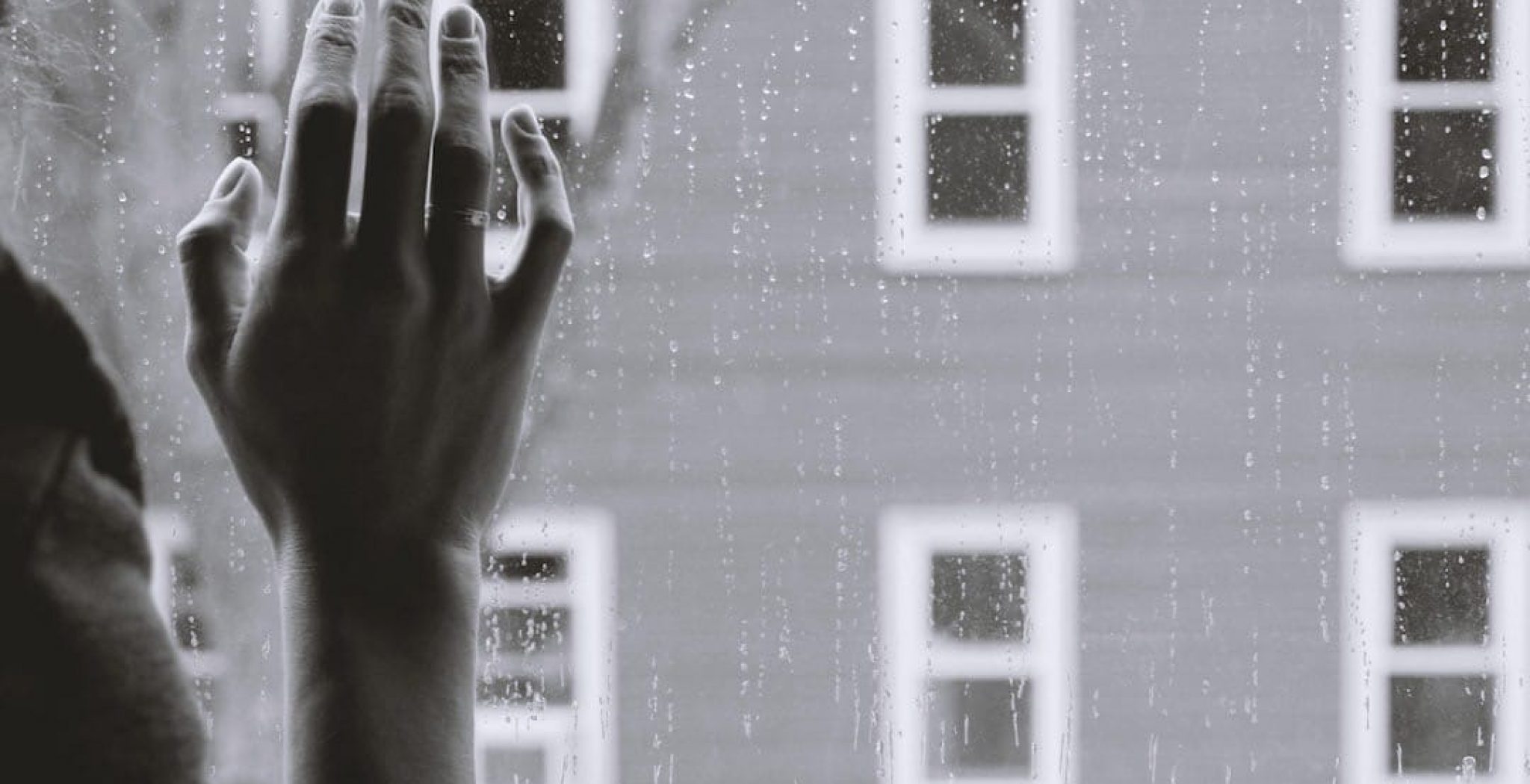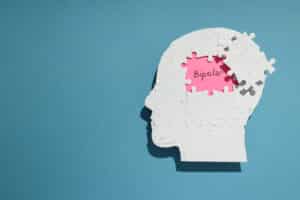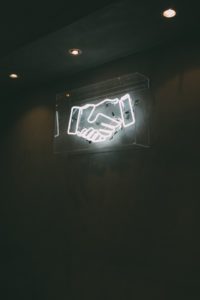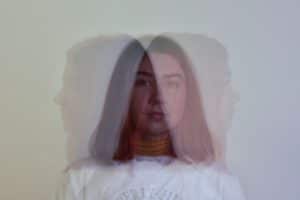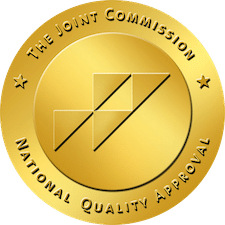You are probably familiar with the term depression. It is a prevalent mental health condition. You may have loved ones or friends with depression or your own struggles with it. However, not all depression is the same.
A depressed mood is a transient, normal variation in emotions. This is generally not a concern unless it persists or has other associated symptoms. When this occurs, you may be experiencing a mental health condition that is affecting your well-being.
Two common mental health conditions that can cause a depressed mood include clinical depression (major depressive disorder) and bipolar disorder. Being able to differentiate the two is essential because they are different conditions that require different treatment approaches for effective management and recovery.
Clinical Depression
The diagnosis of clinical depression, also known as major depressive disorder, requires the presence of a depressed mood as well as a loss of interest in activities. However, it must also include other symptoms and persist for an extended period. Specifically, it requires five or more of the following symptoms within two weeks:
- Depressed mood
- Loss of interest in activities
- Weight or appetite changes
- Sleep changes
- Psychomotor agitation or inhibition
- Fatigue
- Feelings of worthlessness or inappropriate guilt
- Difficulty concentrating
- Recurrent thoughts of death, suicidal ideation, or a suicide attempt
Major Depressive Episodes
A major depressive episode is not the same as clinical depression. Unfortunately, this similar terminology can cause significant confusion.
Clinical depression, or major depressive disorder, is a diagnosis of a specific mental health condition. A major depressive episode is an event consisting of a set of symptoms. While the presence of a major depressive episode is a part of the criteria needed to diagnose clinical depression, it’s only one part of the criteria.
Major depressive episodes can occur in conditions other than clinical depression. One example is bipolar disorder, which can have major depressive episodes that can be easily mistaken for clinical depression. Therefore, differentiating clinical depression from bipolar disorder can sometimes be very difficult.
Differentiating the Two Conditions
Unfortunately, clinical depression and a bipolar major depressive episode can be nearly impossible to distinguish by active symptoms alone. The most significant differentiating factor between the two conditions is the presence of prior manic or hypomanic episodes that occur with bipolar disorder.
However, these manic or hypomanic episodes are absent during an active major depressive episode, allowing your bipolar disorder to appear identical to clinical depression.
History of Mental Health Symptoms
As a result, differentiating the two disorders will rely heavily on your reflection on your history of prior symptoms. If you have ever experienced symptoms of a manic or hypomanic episode, the diagnosis favors bipolar disorder over clinical depression. However, even if you have experienced a prior manic or hypomanic episode, you might not have known what it was.
During a manic or hypomanic episode, you may have felt elated or filled with an unusual amount of energy. A decreased need for sleep can allow you to stay up for days at a time, usually working on an exciting new project. You might have had a reduced appetite or interest in eating. Pressured speech can occur when you feel the need to speak rapidly about numerous topics.
You may have experienced an increased belief in your ability to multitask, which typically results in you working on numerous projects simultaneously but completing very few or none of them. You may have even participated in risky behavior that showed a severe lack of judgment such as gambling, wasting money, or engaging in illegal or dangerous activities.
Mood Patterns
With clinical depression, when you aren’t actively experiencing depressive symptoms, you tend to be back at your baseline. Conversely, with an underlying bipolar disorder, you have a much more significant variation in symptoms.
Those with clinical depression are often characterized as feeling “down,” and those with bipolar disorder are described as “up and down.” These “ups” tend to be manic or hypomanic episodes.
Other Types of Depression
Major Depressive Disorder
Major depressive disorder, also called major depression, is characterized by a combination of symptoms that interfere with a person’s ability to work, study, sleep, eat, and enjoy once-pleasurable activities. Major depression is disabling and prevents a person from functioning normally. An episode of major depression may occur only once in a person’s lifetime, but more often, it recurs throughout a person’s life.
Persistent Depressive Disorder
Persistent depressive disorder (formerly called dysthymia) is a continuous long-term (chronic) form of depression. A person who has persistent depressive disorder may have episodes of severe depression along with periods of less severe symptoms (although low-grade sadness and pessimism persist).
Bipolar Disorder
Bipolar disorder, also called manic-depressive illness, is characterized by cycles of highs (mania or hypomania) and lows (depression). Mania or hypomania describes an abnormally elated or irritable mood that can last for at least one week. During this period some people may experience delusions or hallucinations. Some will behave impulsively and take unnecessary risks, such as going on spending sprees, making foolish business investments, or engaging in risky sexual behavior. Episodes of mania can be serious and sometimes lead to hospitalization.
Cyclothymic Disorder
Cyclothymic disorder is a milder form of bipolar disorder. People with cyclothymic disorder experience numerous periods of hypomania (an elated or irritable mood) as well as periods of depressive symptoms lasting for at least two years. However, the symptoms do not meet the diagnostic requirements for major depressive disorder or manic episodes. Cyclothymic disorder usually begins in adolescence or young adulthood and continues throughout life. It rarely occurs in children although it may be seen occasionally in adolescents.
Postpartum Depression
Postpartum depression is much more than the “baby blues” (relatively mild emotional disturbance that many women experience after delivery). It is estimated that 10–20% of women experience postpartum depression after giving birth. Symptoms include feelings of sadness, anxiousness, worthlessness, hopelessness, irritability, fatigue, changes in sleeping patterns or appetite, difficulty concentrating/making decisions, crying episodes for no apparent reason, withdrawing from friends and family members, fearfulness about caring for the baby and being away from the baby, thoughts about harming oneself/the baby/one’s partner/one’s family members without actually doing anything to harm them.. Postpartum psychosis is an even rarer condition but requires urgent medical care as it involves hallucinations and delusions and can lead to harmful behaviors towards oneself/others/the baby.
Treatments for Clinical Depression
The good news is that there are many effective treatments for clinical depression. The key is to get help early. The sooner you seek treatment, the more likely it is that you’ll feel better. There are three major types of treatment for clinical depression:
1) antidepressant medication,
2) psychological therapies such as cognitive behavioral therapy (CBT), and
3) electroconvulsive therapy (ECT).
Your doctor will probably recommend one or a combination of these treatments depending on the severity of your symptoms and how well you respond to specific treatments. It can take several weeks or months of treatment before you start to feel better, so it’s important to be patient and keep going even if it feels like it’s taking a long time. Remember that treatment works! It’s also important to keep in mind that relapses (when symptoms return after a period of improvement) are common, especially during times of high stress. If this happens to you, don’t get discouraged—talk to your doctor about what you can do to prevent further relapses.
Bipolar Depression What It Is and How to Cope
Depression is a common but serious mood disorder. It causes severe depression symptoms that can affect how you feel, think, and handle daily activities, such as sleeping, eating, or working. More than just a bout of the “blues,” depression isn’t a weakness and you can’t simply “snap out” of it. Depression may require long-term bipolar depression treatment. But don’t get discouraged. Most people with depression feel better with medication, therapy, or both.
Bipolar disorder is characterized by severe highs and lows in mood and energy levels. These extremes are called manic episodes and depressive episodes. Bipolar depression is a depressive episode that occurs as part of bipolar disorder.
Mania is a distinct period of abnormally and persistently elevated, expansive, or irritable mood. During a mania, people may have an inflated sense of self-importance and grandiose ideas. You may be more talkative than usual and have racing thoughts. Your sleeping patterns may change, and you may become more opinionated and impulsive than normal. You may also become easily agitated or angered during a manic episode.
Depressive episodes are characterized by low moods that last for two weeks or longer. During this time, you may have little interest in things you once enjoyed and lack energy to do your usual activities. You may also experience hopelessness, worthlessness, guilt, concentration problems, changes in sleep or eating habits, fatigue, and thoughts of suicide during a depressive episode.
Bipolar depression often goes unrecognized because the manic episodes tend to be more noticeable than the depressive episodes. As a result bipolar disorder is commonly misdiagnosed as unipolar depression—a period of depressed mood without any manic episodes—or schizophrenia—a mental health condition that includes hallucinations or delusions along with periods of low moods. Identifying bipolar disorder early is important because it can make all the difference in terms of getting appropriate treatment options that can improve your quality of life significantly.
Bipolar Disorder vs Major Depressive Disorder
It’s estimated that about 3% of Americans suffer from bipolar disorder while 6% suffer from major depressive disorder—also known as unipolar depression—in any given year. That means that there are about twice as many people suffering from unipolar depression as there are from bipolar disorder; however, bipolar disorder tends to be much more severe than unipolar depression with sufferers experiencing more hospitalizations, work impairment, and suicides attempts than those with unipolar depression Unipolar depression is marked by periods of extremely low moods without any manic episodes while bipolar disorder includes both manic and depressive episodes. Here’s how they differ:
The key difference between the two disorders is that people with bipolar disorder experience extreme highs (manic episodes) in addition to extreme lows (depressive episodes). Mania is a distinct period of abnormally and persistently elevated or expansive mood while major depressive disorder is simply defined by low moods lasting for two weeks or longer without any manic episodes mixed in. It’s important to note that not everyone experiences both extremes; some people only have manic episodes while others only have depressive episodes (known as “pure” mania and “pure” depression respectively).
A small minority of individuals suffering from bipolar disorder will even experience both extremes at the same time (known as “mixed states”). However, even if someone only experiences one type of episode (either pure mania or pure depression), they will still be diagnosed with bipolar disorder because the goalposts for what qualifies as an episode are different for each type; an episode of pure mania must last for at least one week while an episode of pure depression must last for at least two weeks If you’re unsure whether you’re dealing with unipolar depression or bipolar disorder, speak to a mental health professional who can give you a diagnosis based on their evaluation of your symptoms according to the criteria set forth in the Diagnostic and Statistical Manual of Mental Disorders (DSM–5).
Why Does It Matter?
You may wonder why differentiating a bipolar depressive episode from clinical depression matters if the two present so similarly. Firstly, it is crucial to have the correct diagnosis for documentation purposes. Misdiagnoses can persist in medical records, confusing medical providers and delaying treatment.
Secondly, the treatment of clinical depression and bipolar disorder are different. Clinical depression is treated with antidepressants. Bipolar disorder can be treated with antidepressants but typically requires concurrent treatment with a mood stabilizer or antipsychotic.
If a bipolar depressive episode is mistaken for clinical depression and treated with an antidepressant alone, it could induce a manic episode. The risk-taking behaviors and other symptoms of a manic episode can be dangerous to yourself and others. Therefore, the faster the correct diagnosis is made, the sooner your healthcare provider can initiate appropriate treatment. Clinical depression and bipolar disorder are both manageable mental health conditions when treated.
Although depression is a familiar concept, there is more than one type of depression. Clinical depression (major depressive disorder) can easily be mistaken for a bipolar major depressive episode. They share similar names and similar symptoms. The key differentiating factor is the presence or absence of a history of manic or hypomanic symptoms. At Southern California Sunrise Recovery Center, we understand the importance of differentiating the two conditions. If you or a loved one suffer from signs or symptoms of depression but aren’t sure of the underlying cause, we want to speak to you. Call us at (714) 942-4143 to speak with a staff member and find out more information.
